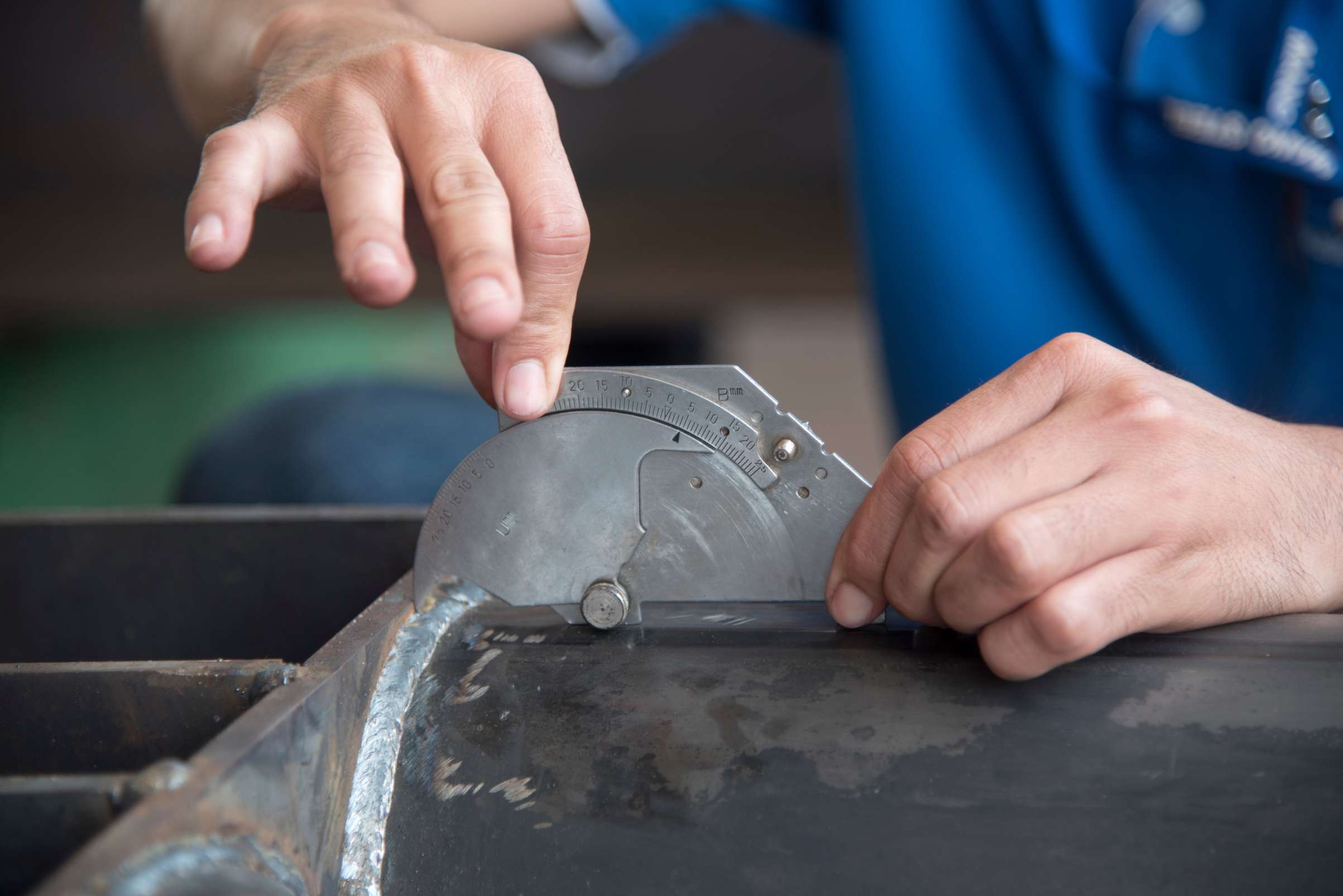Comprehensive Pipeline Welding Inspection: Protecting Framework Honesty
Comprehensive Pipeline Welding Inspection: Protecting Framework Honesty
Blog Article

Ideal Practices for Pipeline Welding Examination: Techniques, Specifications, and Treatments to Accomplish Quality Control and Conformity
Effective pipeline welding inspection is important for guaranteeing the integrity and safety of crucial facilities. Understanding the complexities involved in each stage of examination is critical to attaining conformity and reliability in pipeline systems.
Relevance of Welding Examination
The honesty of bonded joints is critical in ensuring the safety and security and integrity of pipeline systems. Proper welding strategies and detailed assessment processes are critical to prevent failings that can cause devastating incidents, ecological damage, and death. Pipeline Welding Inspection. Welding assessment functions as a preventive action, determining defects such as splits, porosity, and incomplete blend before they rise right into serious concerns
Additionally, pipe systems commonly operate under high stress and extreme problems, making the quality of welds a lot more critical. Regulative conformity is an additional considerable aspect, as numerous requirements determine the quality control procedures that must be stuck to in pipe building and maintenance. Failing to abide can lead to economic losses and legal implications.

The function of welding examination extends beyond plain verification of workmanship; it includes the guarantee of long-term operational stability. This entails a systematic method that consists of not only visual assessments yet also advanced non-destructive testing techniques. Eventually, reliable welding inspection is an investment in the durability and security of pipeline systems, guaranteeing they work as planned while decreasing threats connected with material deficiencies.
Key Evaluation Methods

Aesthetic evaluation, often the very first line of protection, allows for the identification of surface area defects such as fractures, damages, and porosity. Ultrasonic screening employs high-frequency sound waves to identify internal problems, supplying an extensive analysis of weld honesty. This non-destructive method is especially reliable for identifying gaps that might not show up on the surface.
Radiographic testing includes using X-rays or gamma rays to generate photos of the welded joint, revealing internal flaws. This strategy gives detailed insights but may require specific devices and security factors to consider. Last but not least, magnetic fragment screening is reliable for finding surface and near-surface interruptions in ferromagnetic products, making use of electromagnetic fields and fine iron bits.
Market Specifications and Laws
Conformity with market standards and regulations is essential for making certain the high quality and security of pipeline welding examinations. These requirements offer a structure for ideal methods in welding processes, products, and evaluation techniques, permitting organizations to minimize flaws and enhance the honesty of pipeline systems. Key bodies such as the American Culture of Mechanical Engineers (ASME), the American Welding Society (AWS), and the International Company for Standardization (ISO) state standards that are widely identified and embraced within the industry.
In the USA, regulations from the Pipe and Hazardous Materials Security Administration (PHMSA) regulate the safety of pipe procedures, mandating extensive inspection procedures. These criteria not only offer to protect public safety and security and the environment yet also make sure compliance with contractual and legal commitments. Adherence to the relevant codes, such read this as ASME B31.3 for procedure piping, is important for preserving functional efficiency and regulative conformity.
Additionally, constant updates and alterations to these standards show technical developments and progressing sector practices, highlighting the demand for companies to stay educated and train workers as necessary. Ultimately, robust compliance with well established criteria fosters count on and dependability in pipe framework, guarding both stakeholders and assets.
Efficient Assessment Treatments
Reliable inspection procedures are essential for determining prospective flaws in pipe welds and making certain the overall integrity of the system. A systematic method to evaluation includes a number of essential phases, including pre-weld, in-process, and post-weld evaluations. Each phase plays an important role in maintaining quality control.
During pre-weld evaluation, it is important to assess the products and joint configurations, making sure conformity with job specifications. In-process examinations involve checking welding techniques and parameters, such as warm input and travel rate, to stop learn the facts here now flaws from happening. This stage enables real-time modifications to welding methods.
Post-weld evaluations include non-destructive screening (NDT) methods like radiography, ultrasonic testing, and magnetic fragment testing. These methods aid find interior and surface imperfections that might compromise the pipe's check my site performance. Documentation of all examination activities is paramount, giving a traceable document that supports conformity with market standards.
Educating and certification of examination workers further improve the effectiveness of these treatments. By adhering to an organized inspection method, organizations can minimize risks, make certain conformity, and eventually deliver pipelines that fulfill strict safety and security and efficiency requirements.
Usual Challenges and Solutions
Pipe welding inspection provides numerous common difficulties that can influence the high quality and safety and security of the end product. One substantial challenge is the variability in welding strategies and products, which can result in irregular weld top quality. To address this, it is important to develop standardized procedures and training for welders, making sure a consistent approach across jobs.

Ecological elements, consisting of temperature and moisture, can likewise affect the welding procedure, potentially bring about fractures or insufficient combination. Implementing regulated environments and sticking to pre-weld procedures can mitigate these risks.
Final Thought
To conclude, the implementation of best techniques for pipe welding evaluation is important for ensuring top quality guarantee and compliance with industry criteria. A comprehensive technique, incorporating different strategies such as visual, ultrasonic, and radiographic screening, promotes the identification of flaws throughout all phases of the welding process. Pipeline Welding Inspection. Adherence to established laws and effective evaluation treatments not just enhances the dependability and safety and security of pipe systems but likewise alleviates threats related to welding problems, consequently advertising overall operational stability
Compliance with market criteria and policies is crucial for ensuring the quality and security of pipeline welding evaluations. These requirements offer a framework for best methods in welding procedures, products, and assessment methods, enabling organizations to reduce issues and improve the honesty of pipe systems.In the United States, laws from the Pipe and Hazardous Materials Safety And Security Management (PHMSA) control the security of pipeline procedures, mandating extensive examination protocols. A systematic technique to inspection incorporates numerous key stages, consisting of pre-weld, in-process, and post-weld examinations.In verdict, the execution of finest methods for pipeline welding inspection is important for guaranteeing quality guarantee and conformity with market standards.
Report this page